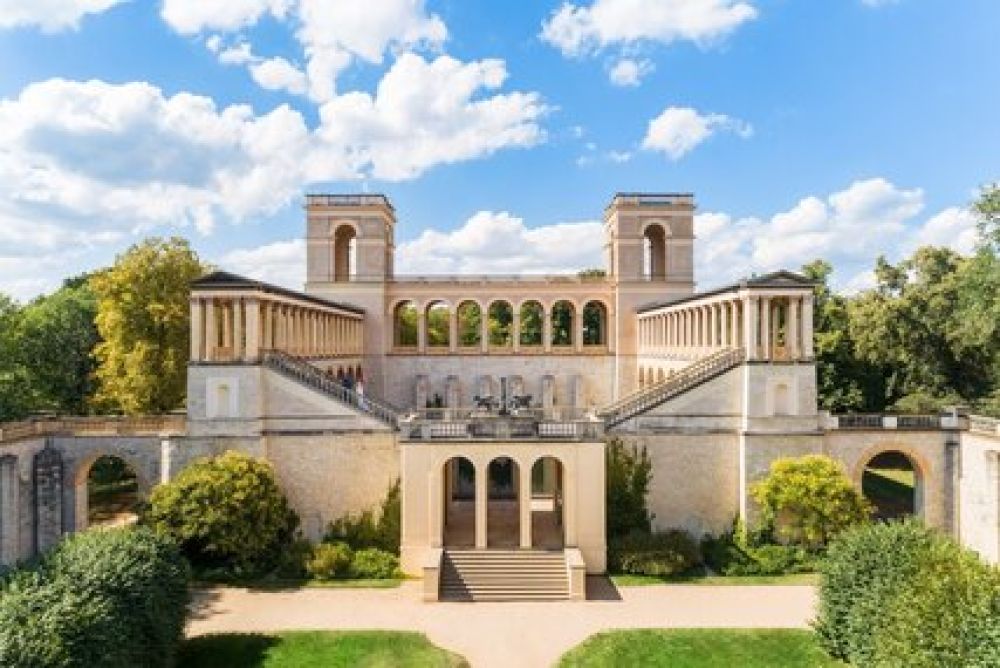

Perched regally atop the Pfingstberg hill, the Belvedere on the Pfingstberg in Potsdam, Germany, is a prime example of 19th-century romantic architecture. Commissioned by King Friedrich Wilhelm IV of Prussia, the exquisite structure was designed by architects Ludwig Persius and Friedrich August Stüler, the latter continuing the work after Persius's death. Their unified vision blossomed into a beautiful structure that mirrors the grandeur and fascination with classical antiquity and the Italian Renaissance that gripped European nobility during the king's reign.
The Belvedere's construction spanned from 1847 to 1863 and was part of a broader cultural landscape aspiration, resembling the visions of romantic poets and artists of the time. Unfortunately, due to financial constraints and the subsequent political developments, the complete vision for the Pfingstberg ensemble remained unrealized.
The scenic overlook was not only a place of personal retreat for the king but also an architectural statement, designed to complement the abounding royal palaces of Potsdam. This picturesque setting was overshadowed by the two World Wars and the ensuing division of Germany. The Belvedere suffered neglect during the GDR regime, leading to a period of decay.
In the 1990s, restoration efforts began in earnest, driven by the "Förderverein Pfingstberg e.V.," a group committed to preserving this architectural gem. Through their efforts, the Belvedere's beauty has been largely restored, bridging Potsdam's past with its present.
Belvedere's tourism history can be likened to a phoenix rising from the ashes. Post-reunification Germany saw a reinvigorated interest in restoring and showcasing the nation's cultural heritage. This shift rekindled interest in Potsdam's historical sites, including the Belvedere, which today is part of the Palaces and Parks of Potsdam and Berlin UNESCO World Heritage Site, attracting history enthusiasts and tourists from around the globe.
Visitors are drawn not only to the rich history but also to the stunning panoramic views of Potsdam and the surrounding areas. In recent years, the Belvedere has also become a beloved venue for weddings, classical concerts, and other cultural events, further cementing its status as a vibrant tourist attraction.
The latest trends in tourism at the Belvedere focus on sustainable and culturally enriching experiences. Tourists are increasingly interested in guided tours that provide in-depth historical context and stories about the site's past. The integration of interactive elements and multimedia guides has also become more prevalent, catering to a tech-savvy global audience.
Another emerging trend is small-group tourism, which allows for a more personalized and intimate exploration of the area. This is in line with the wider trend of experiential travel, where visitors seek to deeply engage with the place's history, culture, and natural beauty.
In response to the global health challenges, there has been a significant increase in the demand for outdoor and spacious venues that allow for social distancing. The Belvedere, with its open terraces and expansive views, offers a naturally airy and safe environment for visitors.
The Belvedere on the Pfingstberg, with its storied past and breathtaking vistas, continues to evolve as a tourist destination while remaining steadfastly rooted in its historical grandeur. For those wishing to step back in time and admire one of Germany's architectural masterpieces, a visit to this Potsdam treasure is undoubtedly a must.